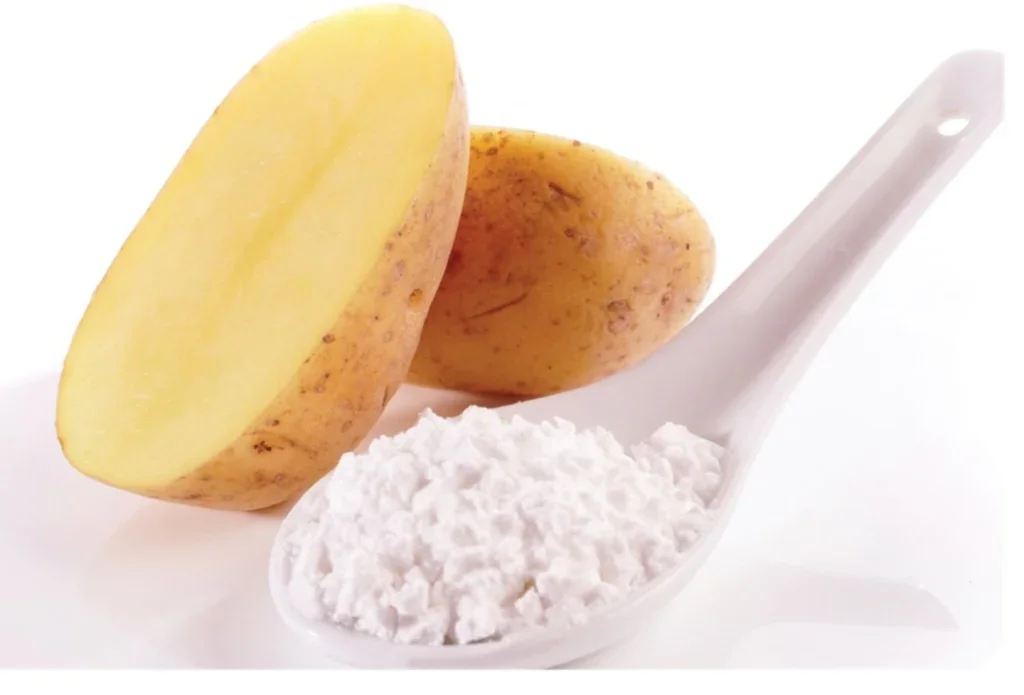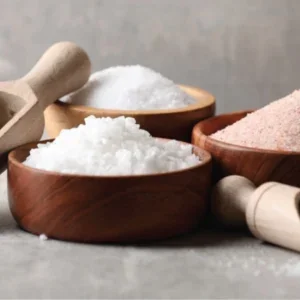
In recent years, consumers have become ever more invested in their gut health. Terms like probiotic and prebiotic – and even postbiotic – are no longer niche, with a vast array of supplements promising to improve our microbial balance.
A new addition to the list is resistant starch. While not yet a major player in the supplements market (at least compared to probiotics), interest is rapidly growing. According to Precedence Research, the market size is expected to surge from $12.8bn this year to $22.9bn by 2024, representing a CAGR of 6.6%. Meanwhile, resistant starch has become a trending topic on social media, with a wave of influencers on TikTok singing its praises.
Despite its recent rise to prominence, resistant starch has been studied since the 1970s. Compared to other forms of starch, it’s hard for the body to digest and, therefore, doesn’t lead to the quick rise in blood sugar associated with, say, white bread. It resists being broken down in the small intestine, instead moving on to the large intestine where it is fermented by the resident bacteria.

“It is used as a nutrient source for the microbes in your gut. As this fermentation takes place, shortchain fatty acids (SFAs), including butyrate and propionate, are produced,” explains Clare Thornton- Wood, a registered dietitian and spokesperson for the British Dietetic Association (BDA). “These SFAs are also used as a fuel source by the cells lining your colon. Any SFA not used by the gut go into the bloodstream and circulate around the body.”
Because of its poor digestibility, resistant starch is classed as a type of dietary fibre. It has things in common with its better-known counterparts, soluble and insoluble fibre – especially soluble fibre, which is also fermented in the colon. Not surprisingly, it shares many of the same health benefits, not least helping to balance out blood sugar, feeding the healthy gut bacteria and reducing constipation.
From a chemical standpoint, though, there are differences. Soluble and insoluble fibre are composed from non-starch polysaccharides found in the cell walls of plants, whereas resistant starch is made up of starch molecules. In many ways, resistant starch, of which there are five different types, constitutes a category all its own.
Like other forms of carbohydrate, the nutrient is found across a wide range of dietary sources. “These include nuts, seeds, wholegrains, unripe bananas, legumes such as peas and beans, and food high in carbohydrates that have been cooked and cooled,” explains Thornton-Wood.
It’s the latter point that has piqued the attention of social media influencers, some of whom have filmed themselves freezing and thawing bread, or chilling and reheating baked potatoes. Bizarre though that might seem, starchy foods do change their chemical properties in response to cooking or cooling.
When cooked, the starch granules lose their original structure via a process called gelatinisation. This changes the texture, makes the food easier to digest and increases its glycaemic index. (That’s useful from a taste perspective, but not so ideal for anyone watching their blood sugar levels.)
Conversely, when that same food is cooled, the starchy paste reorganises itself into more orderly, crystalline structures, through a process called starch retrogradation. Resistant starch is created along the way, and much of this remains even when the food is reheated. In one 2015 study, white rice that had been refrigerated and then reheated contained 2.5 times as much resistant starch as freshly cooked white rice. That’s a potential game-changer from a health perspective.
Separating fact from fiction
So what are the key advantages of incorporating resistant starch into your diet, and how can we separate the reality from the hype? To start with a less controversial point, Thornton-Wood remarks that resistant starch is “definitely beneficial” to the gut microbiome. It is a type of prebiotic, meaning it fuels the healthy gut bacteria and helps their populations thrive. The SFAs produced along the way have antiinflammatory properties. Prebiotics have been associated with benefits including better blood sugar control, a well-functioning immune system; improved absorption of calcium; and a lower risk of colorectal cancer. They may also stimulate the hormones that are responsible for controlling appetite. This could help people make better food choices and even facilitate weight loss.

Last year, researchers in China conducted a small trial involving 37 participants. They found that, after receiving resistant starch supplements for eight weeks, people lost an average of 2.8kg (compared to no weight loss for people taking ordinary starch).
On top of their weight loss, the resistant starch group experienced a smaller rise in blood sugar after meals. Their microbiome became more diverse, with several different bacterial species proliferating in their guts. These bacteria were also transferred to mice via faecal transplant. The mice in question lost some fat mass and improved their glucose tolerance.
Shedding weight
So if resistant starch does have an impact on body weight, what might the mechanism be? A 2022 review paper suggested a few possibilities. First, the SFAs produced during fermentation might impact our metabolism, increasing our total energy expenditure and rate of fat burn. Secondly, it may reduce our appetites through ‘the increased production of satiety signals’.
Finally, since resistant starch is poorly digested, it reduces the calorific density of a meal. That cooled and reheated white rice would actually have fewer calories than the rice straight out of the pan. “There are only 2kcal per gram in resistant starch compared to 4kcal per gram for other forms of starch,” notes Thornton-Wood. “It has also been shown in some studies to increase feelings of fullness after eating, therefore resulting in a reduction in food intake.”
Aside from the recent study in China, there have been plenty of small studies in animals and humans confirming these kinds of effects. However, there have been no major clinical trials and the evidence remains rather mixed. In fact, many of the benefits of resistant starch turn out to be somewhat speculative.
“Resistant starch has also been shown to reduce blood sugar levels after meals and improve insulin sensitivity – this is linked to reduction in risk factors for type 2 diabetes, obesity, heart disease,” remarks Thornton-Wood. “But it should be noted that this is very much an emerging area of research.”
She adds that, while some people do seem to experience benefits from resistant starch, its effectiveness differs from person to person. The benefits also depend on other factors like dosage, meaning it’s hard to make sweeping generalisations. Recall there are five types of resistant starch. Type 1 is not accessible by digestive enzymes; type 2 evades digestion because of the nature of the food; type 3 is produced when foods are cooked then cooled; while types 4 and 5 are chemically modified.
“There is definitely evidence to support the health benefits of resistant starch, but more is needed to ascertain the impact across all population groups and the dosage and type of resistant starch,” says Thornton-Wood. She adds some people may suffer negative reactions to resistant starch. “If you suffer from Irritable Bowel Syndrome (IBS), resistant starch can actually exacerbate the symptoms,” she says.
In general, IBS sufferers are sensitive to FODMAPS, foods that are rapidly fermented in the gut. Resistant starches may not pose quite the same problem, as they are slowly fermented over time, but people should nonetheless be aware of consuming large amounts and monitor for any discomfort.
Resisting disease
For the rest of us, resistant starches are welltolerated in typical quantities, and unlikely to come with ill-effects. Many studies have suggested, on a population level, we aren’t consuming enough of them – in contrast to our Paleolithic ancestors (who are thought to have consumed around 30–50g a day through sources such as tubers), the average person consuming a Western diet gets no more than 3–8g a day.
Although there is no recommended daily intake of resistant starch, some researchers suggest aiming for at least 15g, tripling our average intake. For instance, one study found a significant improvement in insulin sensitivity after four weeks of consuming 15–30g of resistant starch a day. For many people, this shouldn’t prove too difficult. Unlike some trace nutrients, which require supplementation, resistant starch is easy to obtain from dietary sources alone.
“I would always recommend using a food-first approach,” says Thornton-Wood. “Increasing nuts, beans and wholegrains in the diet is an excellent way to begin. You could also consider what forms of cooked resistant starch you could incorporate. A good example would be cooking baked potatoes in bulk, cooling then freezing, and taking into work to microwave for lunch.”
Thornton-Wood would not advise supplementation, as food in its natural state confers many additional benefits. That said, if you’re on a low-carb diet, and would prefer to steer clear of beans and grains, supplementation may be appropriate. After all, supplements are designed to contain almost no usable carbohydrates, and it’s easier to control how much you’re having.
Whatever a TikTok nutritionist tells you, resistant starch probably isn’t a magic bullet for weight loss or gut health. But it’s certainly an important component of a balanced diet, and one that most people should consider consuming more of.






